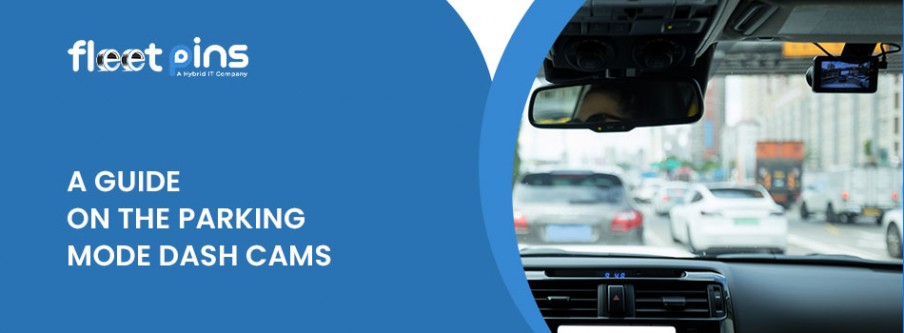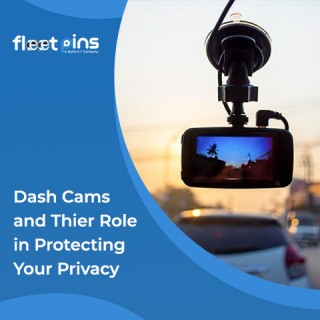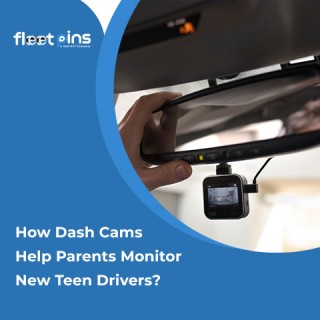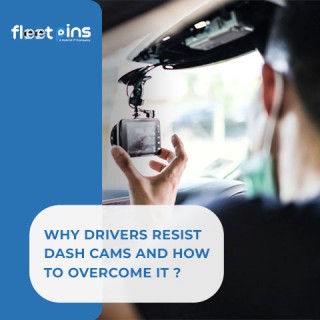
- On 2024-09-09
A Guide on the Parking Mode Dash Cams
You park your car, head off to run some errands, and when you return, you find your vehicle damaged with no clue as to who caused it. It’s a common and frustrating problem, but there’s a practical solution, dash cams with parking mode. These cameras keep an eye on your vehicle even when you're not there.
parking dash cam records any incidents that could help identify the perpetrator or provide evidence if your car is vandalized or stolen. In this comprehensive guide let’s see all you need to know about parking mode dash cams, from how they function to selecting the perfect one for your needs.
What is Parking Mode?
Parking mode is a specialized feature available in some dash cams that enables them to continue recording even when your vehicle is switched off. Unlike regular driving mode which captures footage while the car is moving, parking mode is specifically designed to monitor your car when it's stationary. This mode can detect movement around your vehicle or sense any impact, automatically triggering the camera to start recording when something occurs.
The primary benefit of parking mode is its ability to offer ongoing surveillance, which is particularly valuable in deterring hit-and-runs, vandalism, or theft. With a dash cam equipped with parking mode, you can leave your car unattended with confidence, knowing that any suspicious activity will be captured on video.
Types of Parking Mode Dash Cams
Parking mode dash cams come in various types and feature sets, each tailored to different user needs. Understanding these variations can help you choose the most suitable dash cam for your vehicle.
Motion Detection Mode
This common type of parking mode keeps the dash cam on standby and only begins recording when it detects motion near the vehicle. It’s ideal for capturing footage of someone approaching your car, attempting a break-in, or if another vehicle comes too close.
Impact Detection Mode (G-Sensor Mode)
Triggered by a sudden impact or shock, such as when another car hits yours, this mode uses a built-in G-sensor (gravity sensor) to detect any abrupt movements or impacts, automatically starting the recording. This mode is perfect for capturing hit-and-run incidents or any significant impact on your car.
Time-Lapse Mode
This mode records footage continuously but at a lower frame rate, reducing the amount of storage required while still capturing all activities around your vehicle. Time-lapse mode is ideal for extended parking periods as it offers a condensed view of everything happening around your car without consuming excessive battery power or memory.
Buffered Recording Mode
In this mode, the dash cam continuously records video in short loops but does not save the footage unless an event, such as motion or impact, is detected. Once triggered, the camera saves the footage from a few seconds before and after the event, ensuring comprehensive coverage of the incident. This mode is useful for capturing the complete context of any event, from start to finish.
How to Maximize the Effectiveness of Parking Mode
To get the best results from your parking mode dash cam, consider these tips for optimizing its use:
- Hardwiring the Dash Cam: Since parking mode requires a constant power source, it’s often best to hardwire the dash cam directly to your car’s fuse box, providing a steady power supply even when the vehicle is off. This setup is particularly beneficial for long-term parking surveillance.
- Using a Battery Pack: If you’re worried about draining your car’s battery, using an external battery pack designed for dash cams is a great alternative. These packs can power the camera for long periods, eliminating any risk to your vehicle’s main battery.
- Adjusting Sensitivity Settings: Many dash cams with parking modes allow you to adjust the sensitivity of the motion and impact sensors. Fine-tuning these settings helps prevent unnecessary recordings triggered by minor vibrations or small movements, such as leaves blowing in the wind.
- Choosing the Right Position: Place your dash cam strategically to ensure it has a clear view of the most important areas around your vehicle. Ideally, it should cover both the front and rear of the car for comprehensive monitoring.
Why Choose Fleet Pins Dash Cams for Parking Mode?
Fleet Pins dash cams capture footage in high resolution, ensuring clear and detailed images. This clarity is crucial for identifying license plates or distinguishing features of anyone who may damage your car.
Equipped with advanced sensors, Fleet Pins dash cams accurately detect both motion and impacts, ensuring that all significant events are recorded. This makes them highly reliable for parking mode use. Additionally, dash cams come with easy-to-follow installation guides and optional hardwiring kits, making it simple to set up your dash cam for optimal parking mode performance. These dashcams are designed with intelligent power management systems that minimize battery drain while ensuring the camera remains active in parking mode.
Conclusion
Investing in a parking mode dash cam is an excellent way to protect your vehicle when it’s parked and unattended. By understanding the different types of parking modes, optimizing their use, and selecting a dependable brand like Fleet Pins, you can ensure your car is always under surveillance, providing peace of mind. Whether you're looking to deter potential thieves or have evidence in case of an incident, a parking mode dash cam is a valuable addition to any vehicle.




